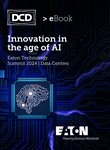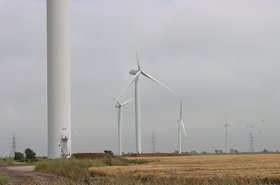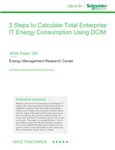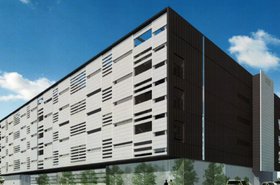There has long been debate about the real value that infrastructure such as data centers provide to the economy and society, with a particular focus on their energy consumption.
This debate is not being helped by reports that suggest with rising demand we will run out of energy in two years. In August publications, such as the Washington Post and also CNN, have cited reports from US grid operators that an expected hot summer, combined with industrial and IT demand, will see “insufficient firm resources to cover summer peak forecasts.”
The issue is similar in certain parts of Europe, where the likes of Dublin and Amsterdam have introduced restrictions on new data centers, with energy constraints impacting existing operations too.
Is it as simple as that? Will data centers simply be unable to get power, let alone from renewable energy sources (RES), in two years? Or are there adaptations, collaborations, and mitigations that can alleviate the energy squeeze, while still facilitating decarbonization?
Data center growth
There is no doubt that data center demand has risen and will continue to do so. There is strong regional demand and growth for 2024-25, despite potential energy restrictions. One analyst has predicted market growth of 9.8 percent CAGR to $418 billion by 2030. It cites the adoption of artificial intelligence (AI), machine learning, the Internet of Things (IoT), cloud, and edge computing as creating “immense data center market opportunities.” Another analyst predicts that hyperscale data center capacity will double every four years.
AI is a major part of that demand. According to IDC estimates, enterprises worldwide in 2023 spent $166 billion on AI solutions, covering software, hardware, and services. However, expectation is for growth of 27 percent per year to $423 billion by 2027. Schneider Electric’s own research estimates that in 2023, AI energy consumption was of the order of 4.5 GW globally, but that will grow to between 14 and 18.7 GW by 2028. AI power consumption was eight percent of total data center power in 2023, but will grow to represent between 15-20 percent in the same period.
Despite the potential energy constraints, we have discerned from interactions with our customers that most are not restricting their energy expectations over the next three years in build-out plans. In fact, plans to build facilities in the 2024-2025 period are already underway, and 2026 plans are being finalized. There is also cause for optimism, as some geographies, such as Singapore, that had previously had moratoriums, have now moved to a case-by-case evaluation, freeing up power for the purpose.
What to do?
With these opposing issues of rapid growth and demand, but potential energy constraints, what can operators and builders do? Will they hit a wall and simply have to tailor operations for what is available? The answer is no, but with qualifications.
Sustainable operations
Firstly, data center owners, operators, and builders will this year focus on sustainable operations as a core requirement for new capacity. To secure permits for data centers, many countries or local jurisdictions require that data center designs be as efficient as possible, use water conservatively, and operate using renewable utility sources. Restrictive countries such as Germany are also requiring a certain amount of heat that is generated be reused in a constructive way.
Many operators have already undertaken huge efficiency drives, aided by developments in equipment and systems. Despite the fact that AI workloads have placed specific demand on racks, power density, and cooling, new generations of processors have made huge leaps in density and power reduction. Some processors now offer up to 25 times the processing power of previous generations of technology, while using up to 30 times less power, and with a massively reduced physical footprint for high-density deployments.
Furthermore, reference designs developed with vendors are also going a long way towards ensuring that new AI capabilities can be built out as efficiently as possible from day one. Heat re-use is also being explored in novel ways, such as a proof of concept in a project in Devon that heats a swimming pool.
Collaboration with local utilities
One of the top concerns of adding data center capacity is the perceived impending shortage of utility power. With data center capacity seemingly growing at a much faster rate than utility power is added, many renewable projects have been delayed due to supply chain, legal, cost, and capacity of installation equipment issues.
This has led to the exploration of new ways of meeting power shortages, with small modular reactors (SMRs), and where Russia, China, and India already have working examples.
However, adding data center capacity does not have to be a one-to-one relationship with adding utility power. A potential shortage of utility power is only expected during peak use times.
I would contend that 2024 will be the year when data center operators will collaborate more with their local utilities. Large data centers have multiple utility feeds and long backup power capacity.
By cooperating with electric utilities, data center operators can offload a significant portion of demand during high-demand electric heat or cooling times. While utility providers will increase their use of peak power generation, DC operators will do more demand-side management to ensure that peak demand does not exceed capability.
More distributed renewable power
This will also be the year when governments around the world figure out a better way to bring more distributed renewable power onto the grid. A main barrier is that most countries use processes and applications designed for one or two grid connections per year and now the requests are for hundreds or thousands of distributed, renewable connections resulting in long connection queues, measured in years.
Once we have this renewable power on the grid, most DC operators will have to adjust to the reality that renewable power has intermittent capacity related to when the wind is blowing, or the sun is shining.
The utilities will try to normalize this concern with grid storage batteries, long-duration energy storage (LDES), or flow batteries that employ a liquid electrolyte to store the electrical charge. However, critical facilities like data centers will need electricity service levels that are much more stable. This will be the year when data center operators start adding multiple hours of on-site energy storage. This onsite storage will benefit not only in resilience, but at times when there is surplus renewable supply that can be stored by data center operators and not curtailed. This renewable energy storage can be used versus carbon-emitting generators.
Way forward
While there will no doubt be challenges in meeting priorities of demand and decarbonization in predicted data center growth, catastrophizing the situation with warnings of running out of power in two years do little to help the situation.
Careful design and planning, combined with deep technical and operational insight will allow data center builders, owners, and operators to collaborate more effectively with authorities and utilities to ensure that the best use is made of the power that is available. Efficient systems and controls, good governance, and the right support will allow the industry to grow while meeting decarbonization ambitions, as utilities build out additional, appropriate generation capacity.






